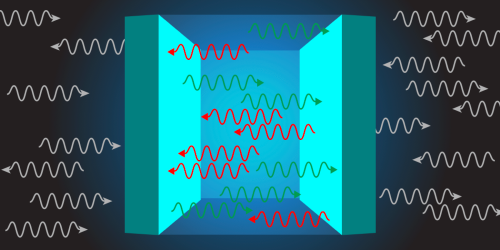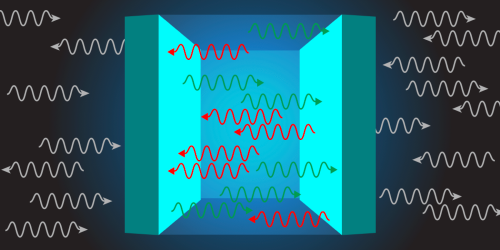Chirality Turns the Casimir Force Repulsive
Bring two parallel, uncharged metal plates close together in a vacuum, and they will attract each other. In principle, this Casimir force could also be repulsive, something that is useful in certain applications, like keeping nanoscale objects apart. But for two plates of the same material that mirror each other, a famous “no-go” theorem says this isn’t possible. Now Qing-Dong Jiang of Stockholm University and Frank Wilczek, who holds appointments at the Massachusetts Institute of Technology, Cambridge, and several other institutions, show that the Casimir force can be made repulsive, large, and tunable, by inserting a “chiral” material between the plates.
First identified in 1948, the Casimir force demonstrates that a vacuum is not empty but filled with quantum fluctuations of the electromagnetic field—virtual photons. Jiang and Wilczek observed that the no-go theorem assumes that right- and left-circularly polarized photons behave in same way. So the theorem, they argue, could be circumvented by inserting a material between the plates that breaks this symmetry. This “chiral” material would cause the two types of photons to have different velocities, and, consequently, each would transfer a different amount of momentum to the plates.
The authors calculated the Casimir force between two plates for two types of intervening chiral materials. They found that the amplitude and, crucially, the sign of the force could be adjusted by changing the distance between the plates or changing the strength of an applied magnetic field. This could yield a repulsive Casimir force more than 3 times as strong as the attractive force for the same setup in a vacuum.
This research is published in Physical Review B.
–Nicolas Doiron-Leyraud
Nicolas Doiron-Leyraud is a Corresponding Editor for Physics based in Montreal, Canada.





